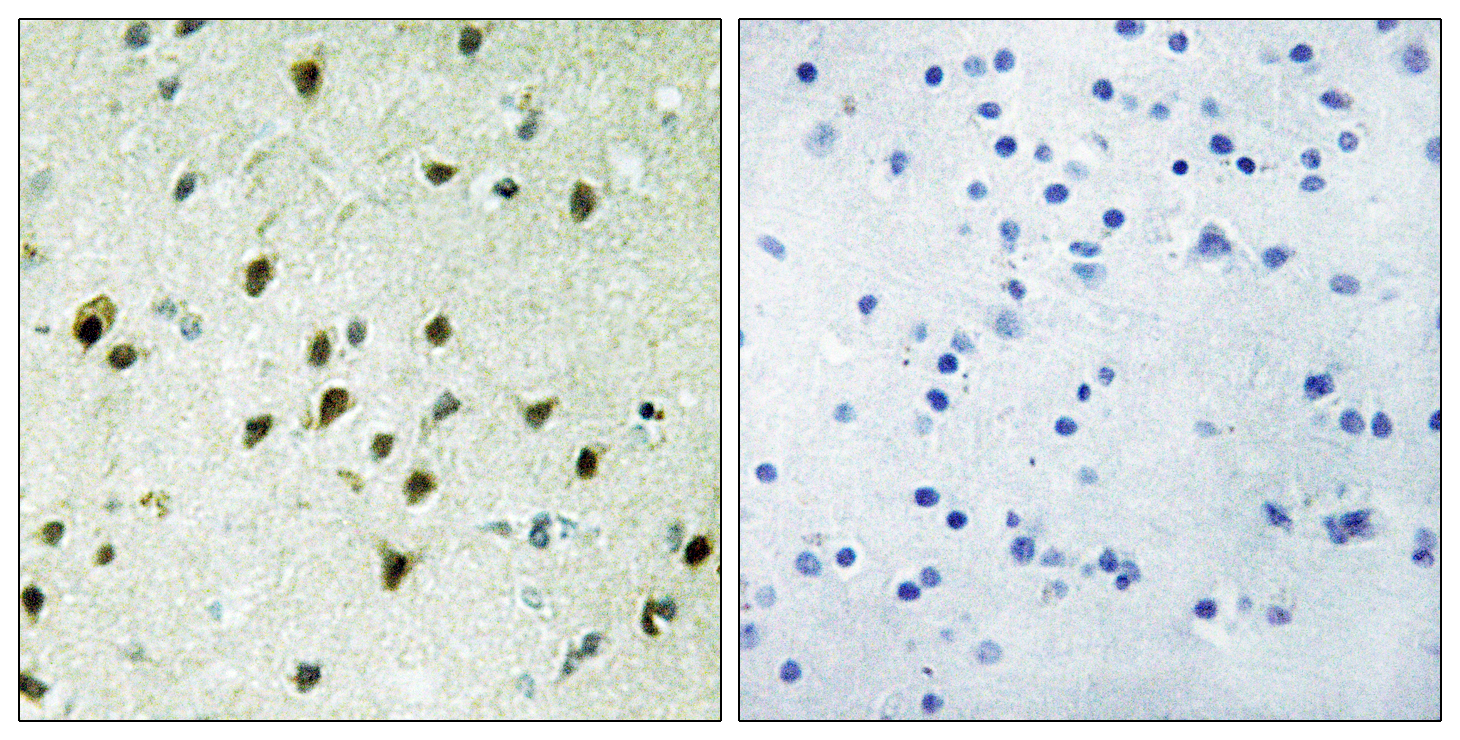Mad 4 Polyclonal Antibody
- Catalog No.:YT2616
- Applications:IHC;IF;ELISA
- Reactivity:Human;Mouse
- Target:
- Mad 4
- Gene Name:
- MXD4
- Protein Name:
- Max dimerization protein 4
- Human Gene Id:
- 10608
- Human Swiss Prot No:
- Q14582
- Mouse Swiss Prot No:
- Q60948
- Immunogen:
- The antiserum was produced against synthesized peptide derived from human MAD4. AA range:10-59
- Specificity:
- Mad 4 Polyclonal Antibody detects endogenous levels of Mad 4 protein.
- Formulation:
- Liquid in PBS containing 50% glycerol, 0.5% BSA and 0.02% sodium azide.
- Source:
- Polyclonal, Rabbit,IgG
- Dilution:
- IHC 1:100 - 1:300. ELISA: 1:10000.. IF 1:50-200
- Purification:
- The antibody was affinity-purified from rabbit antiserum by affinity-chromatography using epitope-specific immunogen.
- Concentration:
- 1 mg/ml
- Storage Stability:
- -15°C to -25°C/1 year(Do not lower than -25°C)
- Other Name:
- MXD4;BHLHC12;MAD4;Max dimerization protein 4;Max dimerizer 4;Class C basic helix-loop-helix protein 12;bHLHc12;Max-associated protein 4;Max-interacting transcriptional repressor MAD4
- Molecular Weight(Da):
- 24kD
- Background:
- This gene is a member of the MAD gene family . The MAD genes encode basic helix-loop-helix-leucine zipper proteins that heterodimerize with MAX protein, forming a transcriptional repression complex. The MAD proteins compete for MAX binding with MYC, which heterodimerizes with MAX forming a transcriptional activation complex. Studies in rodents suggest that the MAD genes are tumor suppressors and contribute to the regulation of cell growth in differentiating tissues. [provided by RefSeq, Jul 2008],
- Function:
- function:Transcriptional repressor. Binds with MAX to form a sequence-specific DNA-binding protein complex which recognizes the core sequence 5'-CAC[GA]TG-3'. Antagonizes MYC transcriptional activity by competing for MAX and suppresses MYC dependent cell transformation.,similarity:Contains 1 basic helix-loop-helix (bHLH) domain.,subunit:Efficient DNA binding requires dimerization with another bHLH protein. Binds DNA as a heterodimer with MAX. Interacts with SIN3A AND SIN3B. Interacts with RNF17.,
- Subcellular Location:
- Nucleus .
- Expression:
- Brain,Lung,Normal aorta,Spleen,
- June 19-2018
- WESTERN IMMUNOBLOTTING PROTOCOL
- June 19-2018
- IMMUNOHISTOCHEMISTRY-PARAFFIN PROTOCOL
- June 19-2018
- IMMUNOFLUORESCENCE PROTOCOL
- September 08-2020
- FLOW-CYTOMEYRT-PROTOCOL
- May 20-2022
- Cell-Based ELISA│解您多样本WB检测之困扰
- July 13-2018
- CELL-BASED-ELISA-PROTOCOL-FOR-ACETYL-PROTEIN
- July 13-2018
- CELL-BASED-ELISA-PROTOCOL-FOR-PHOSPHO-PROTEIN
- July 13-2018
- Antibody-FAQs
- Products Images

- Immunohistochemistry analysis of paraffin-embedded human brain tissue, using MAD4 Antibody. The picture on the right is blocked with the synthesized peptide.



